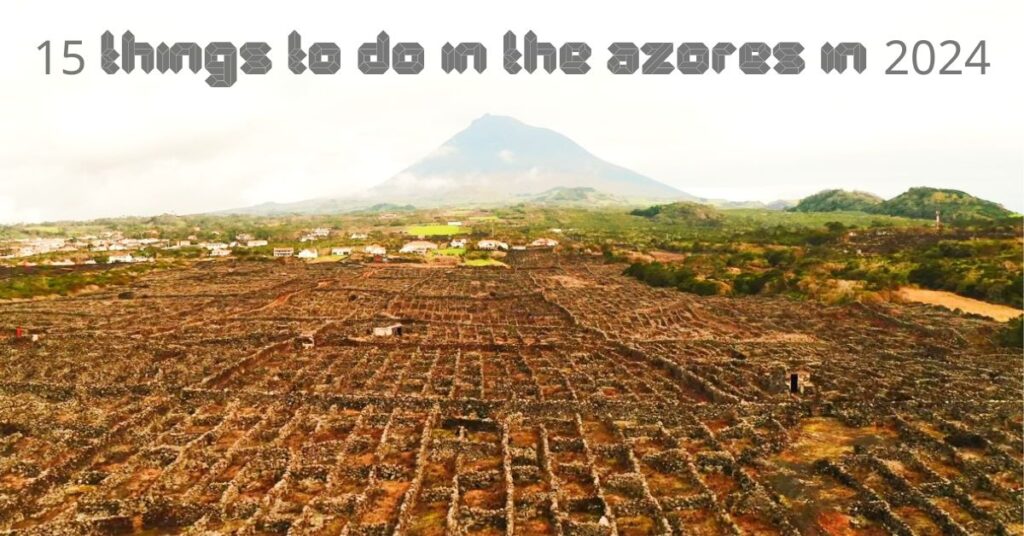In 2024, plan your Azores adventure with a curated list of “15 things to do in the Azores.” From Pico Mountain to diving into the azure waters of Sete Cidades, indulge in local cuisine, attend vibrant festivals, and discover hidden gems on these enchanting Portuguese islands. Whether you’re a nature enthusiast, cultural explorer, or thrill-seeker, these activities will make your Azores experience extraordinary. The volcanic archipelago in the Atlantic Ocean offers nine lush, green islands with geothermal wonders, breathtaking landscapes, and charming towns. Make the Azores your escape from the ordinary and experience unforgettable experiences.
1) Hike into the Sete Cidades crater
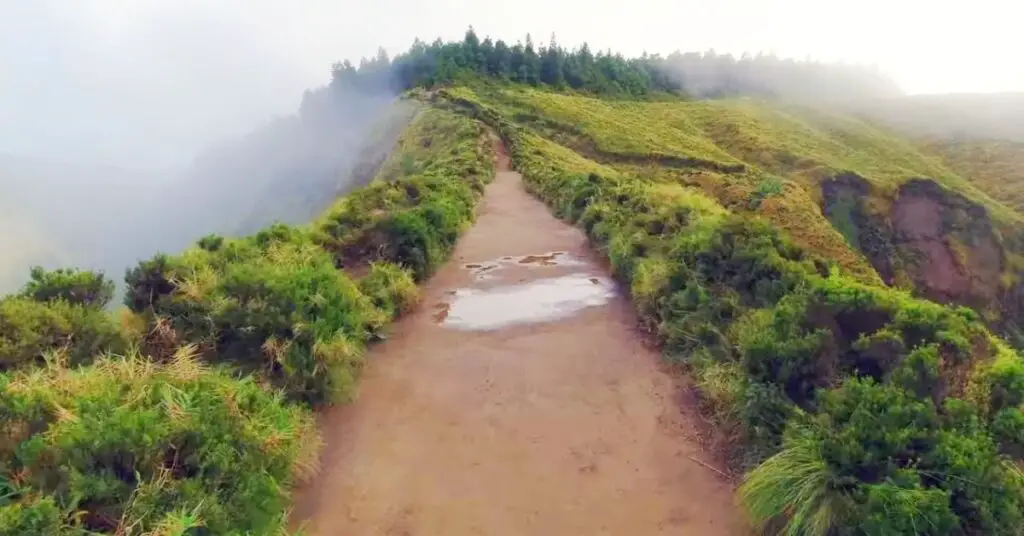
The Sete Cidades, a UNESCO World Heritage Site in the Azores, is home to two stunning lakes, Lagoa Azul (Blue Lake) and Lagoa Verde (Green Lake). The crater was formed by a volcanic eruption over 15,000 years ago, and its two lakes were formed by the collapse of the crater’s walls. Two main hiking trails lead into the crater: the Vista do Rei viewpoint, which is 2 kilometers long and takes 30 minutes to complete, and the trail from Sete Cidades, which is 3 kilometers long and takes 1 hour to complete. Both trails offer stunning views of the crater and the lakes, with the Vista do Rei viewpoint offering panoramic views of the entire crater. For those seeking a challenge, the entire rim trail is 12 kilometers long and takes 6 hours to complete.
There are several hiking trails leading into the crater, ranging from easy to challenging. The most popular trail is the PR3—Via do Rei, which starts at the Vista do Rei viewpoint and descends to the lakeshore. For a more challenging hike, the PR4-Mata do Canário, which starts at the Mata do Canário parking lot and circles the crater rim, is 12 kilometers long and takes 6 hours to complete. Regardless of the trail chosen, visitors will be rewarded with stunning views of the lakes and surrounding countryside.
2) Hike the Pico Mountain
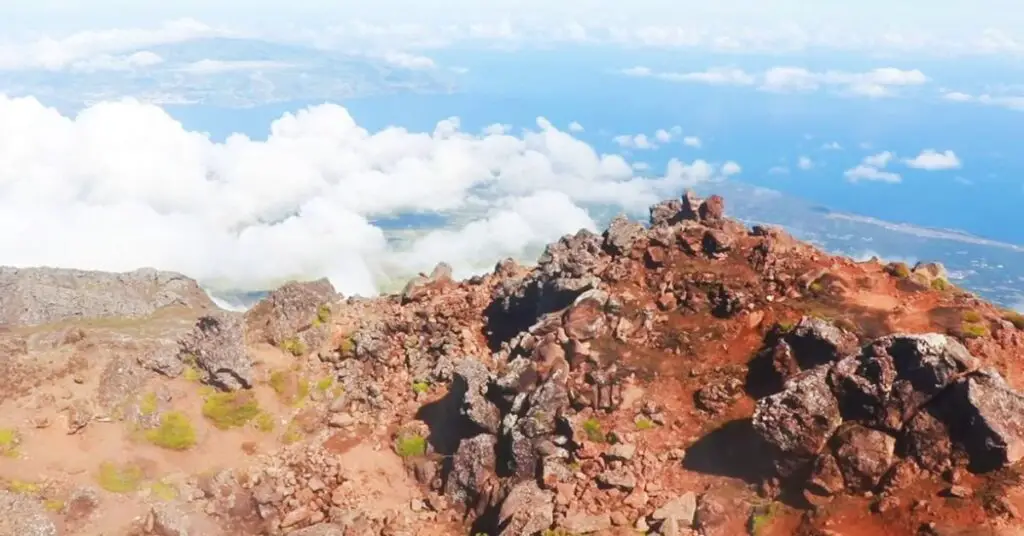
Pico Mountain, Portugal’s highest point, is a challenging hike that takes 6–8 hours, with 3–3.5 hours for the ascent and 4 hours for the descent. The trail starts at Casa da Montanha, a mountain hut at an elevation of 1,231 meters, and winds through volcanic rock formations, lava fields, and cinder cones. The trail also encounters patches of vegetation such as moss, ferns, and small trees. The weather on Pico Mountain can change quickly, so be prepared with layers, rain gear, sunscreen, and a hat.
As you ascend, the views become more spectacular, with the entire island of Pico and the Azores archipelago visible. The hike is divided into three sections: the base, which is relatively easy; the plateau, which is more challenging with steeper slopes and loose volcanic scree; and the summit crater, which is the most difficult, involving scrambling over rocks and navigating around the rim of the crater. The altitude can make you feel thirsty, so pack layers, rain gear, sunscreen, and a hat.
3) Hike the Caldeira Velha Natural Park
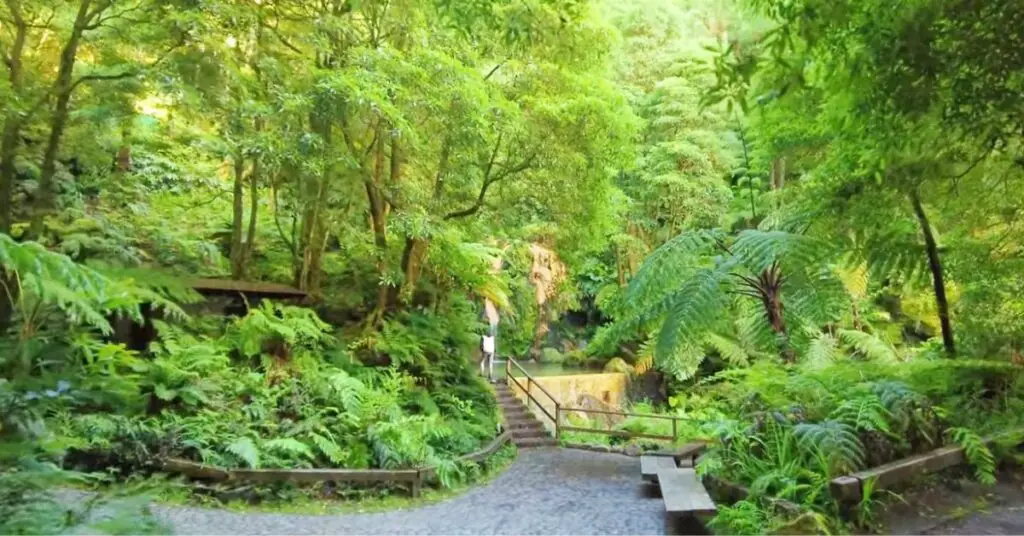
The Caldeira Velha Natural Park, located on São Miguel island, is a must-visit for those interested in the natural beauty of the Azores. The park features a variety of volcanic features, including a crater lake, a waterfall, and thermal pools. The hike to the thermal pools is short and easy, taking about 30 minutes. The pools are at the bottom of a crater and are fed by hot springs from the volcano. The water is said to have healing properties. The park also has a waterfall and a crater lake, with the waterfall near the entrance being popular for swimming and sunbathing.
4) Explore the Gruta do Natal lava cave
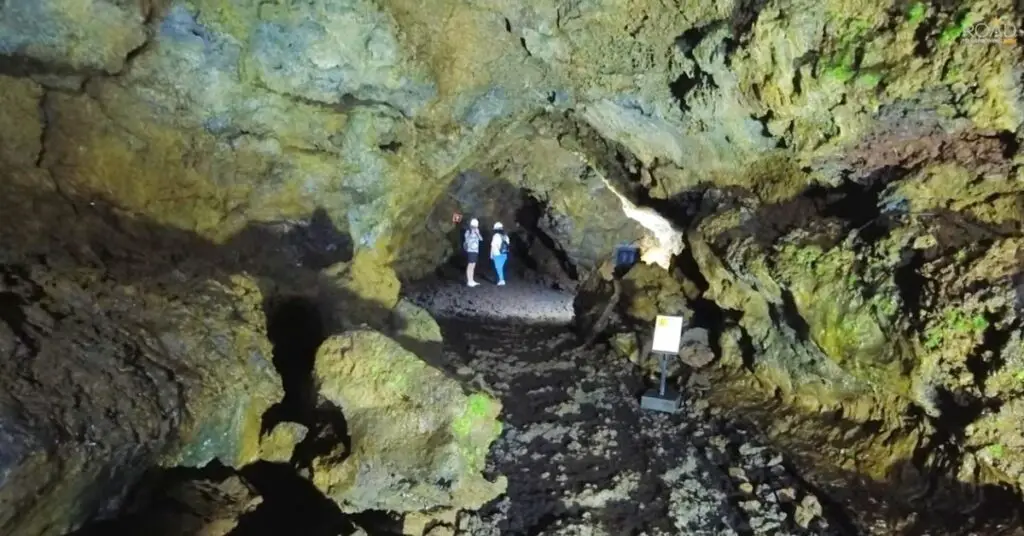
The Gruta do Natal, a 697-meter-long lava tube in Terceira Island, Azores, is a unique and captivating subterranean adventure. The cave, formed by a volcanic eruption in 1761, offers a glimpse into the island’s fiery past and a wonderland of geological wonders. As you descend into the cave, the darkness fades, replaced by an eerie darkness that only headlamps can pierce.
The cave walls, once molten lava, have cooled and solidified into a mesmerizing array of textures and colors, including smooth, glassy surfaces, jagged stalactites, stalagmites, and lava pillows. It is also a haven for unique flora and fauna, with moss carpeting the walls in vibrant shades of green, tiny cave crickets scurrying along the floor, and blind cave spiders spinning delicate webs in the dim light.
The cave has been used by humans for centuries, serving as a refuge for pirates and a hideaway for religious ceremonies. The cave is divided into three sections: Galeria Negra (Black Gallery), Galeria Branca (White Gallery), and Sala da Natividade (Nativity Room).
5) Surf the waves at Praia dos Capuchos
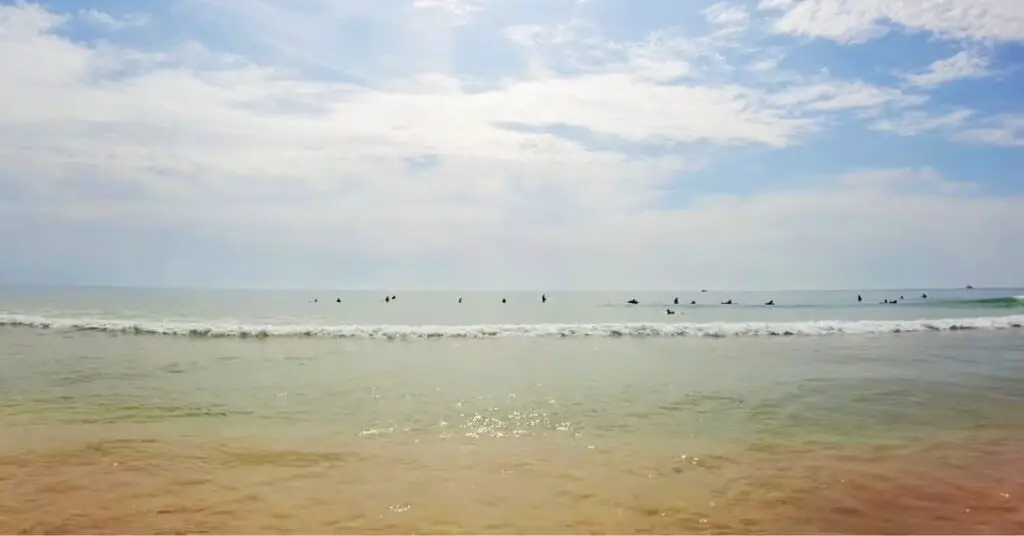
Praia dos Capuchos is a renowned surf spot on São Miguel, Azores, known for its consistent waves ranging from 3 to 8 feet, breaking over a volcanic reef. The waves are best during the winter but can be surfed year-round. The beach is surrounded by cliffs and lush vegetation, providing a stunning backdrop for surfing. It is also a popular spot for swimming, sunbathing, and picnicking.
For beginners, Praia dos Capuchos offers warm, gentle waves, and there are several surf schools offering lessons and rentals. For experienced surfers, the challenging reef can be challenging, but the fun can outweigh the challenges. The beach is a popular destination for swimming, sunbathing, and picnicking.
6) Explore Furnas Hot Springs
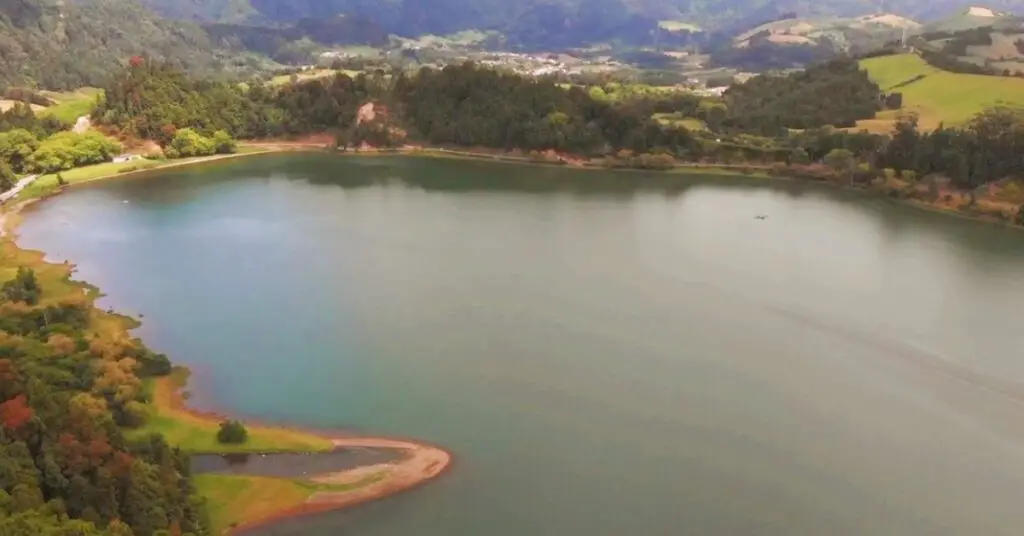
Furnas Hot Springs in the Azores, Portugal, is a geothermal wonderland with steaming vents, mud pools, and therapeutic hot springs. Situated in the volcanic heart of São Miguel Island, this enchanting valley offers an unforgettable experience for both the body and the soul. Visitors can explore the world-renowned Terra Nostra Botanical Garden, which features lush gardens with exotic flora and fauna and the iconic iron-rich thermal pool.
Poça da Dona Beija, a charming complex with eight separate thermal pools, offers a more intimate experience surrounded by lush greenery and nature’s gentle sounds. The fumaroles and boiling springs showcase the raw power of geothermal energy, with vents spewing steam and gases from the earth’s core.
7) Discover Angra do Heroísmo
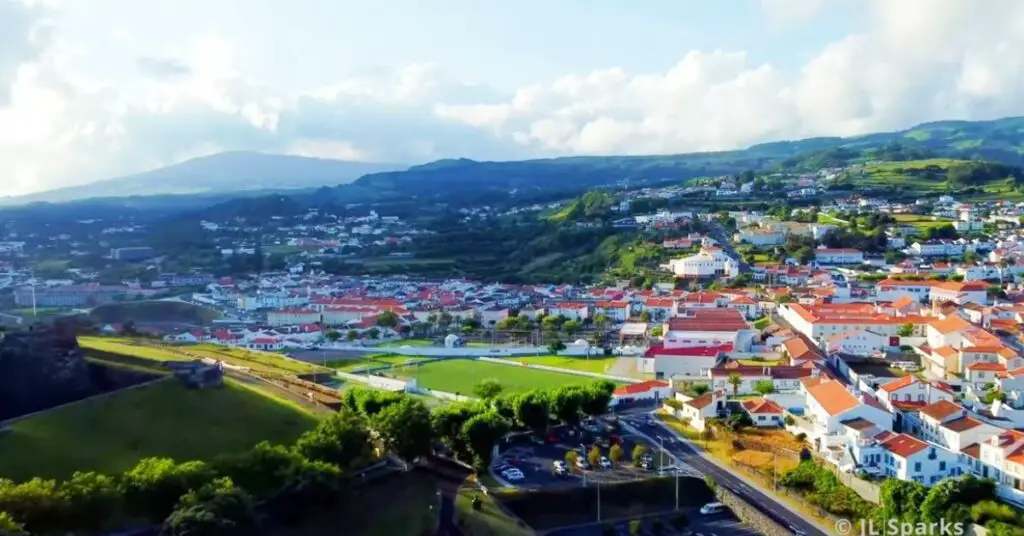
Angra do Heroísmo, a UNESCO World Heritage Site, is the capital of the municipality of Angra do Heroísmo, one of the Azores’ three capitals. Established in 1450 by Portuguese explorer Diogo de Teive, it became a significant trade and commerce center in the Azores. The city is known for its beautiful architecture, rich history, and vibrant culture. Its cobblestone streets feature pastel-colored houses dating back to the 16th and 17th centuries.
Angra do Heroísmo is also a cultural hub, featuring museums, art galleries, theaters, and various festivals and events. Visitors can explore the historic center, visit the Museu de Angra do Heroísmo, and enjoy the city’s vibrant cultural scene. Traditional Azorean restaurants offer local specialties like cozido das furnas and lapas.
8) Take a quad bike tour

Experience the thrill of an Azores Quad Bike Tour, a unique way to explore the islands’ volcanic landscapes, hidden trails, and breathtaking vistas from the comfort of your own ATV. This off-road adventure allows you to traverse volcanic terrain, explore hidden gems, and embrace the elements. Choose from half-day or full-day tours, with half-day tours offering a quick adrenaline rush, while full-day tours allow you to delve deeper into the island’s interior and discover hidden treasures.
Choose from scenic routes or adrenaline-pumping trails, offering options for all levels of experience. Guided tours provide insider knowledge and historical context, while self-guided tours allow you to explore at your own pace and discover your own hidden corners. The combination of these activities makes the Azores Quad Bike Tour an unforgettable experience that connects you directly with the islands’ wild spirit.
9) Explore Gruta do Carvão
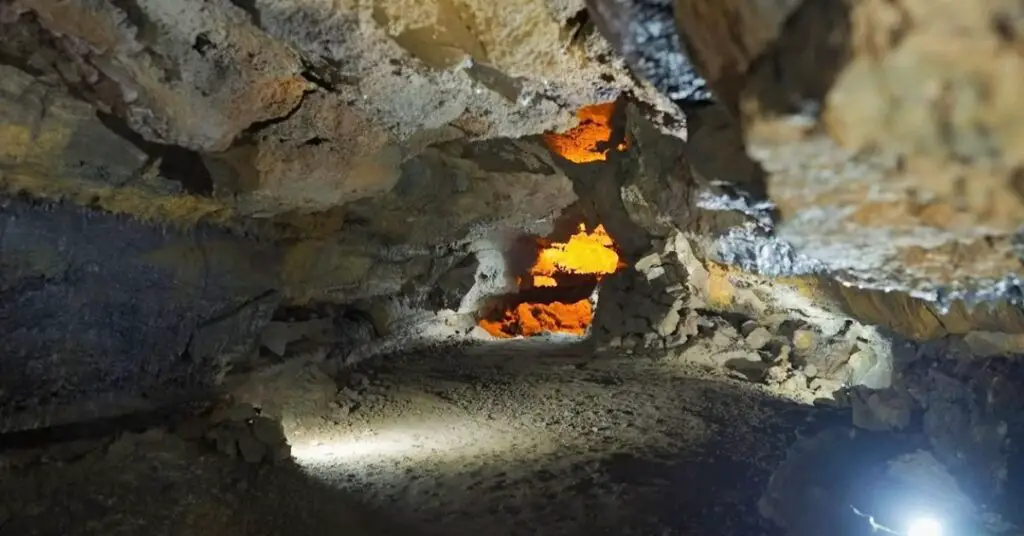
Gruta do Carvão is a 1,650-meter-long lava tube on the island of São Miguel in the Portuguese archipelago of the Azores. It was formed by a volcanic eruption around 2,500 years ago, resulting in a tunnel that is now open to the public. The cave is divided into three sections: Rua de Lisboa (or Secadores de Tabaco), Rua do Paim (the longest section), and Rua João do Rego (the shortest section).
The shortest section, named after the tobacco drying sheds, measures about 300 meters (984 feet). The longest section, measuring 880 meters (2,890 feet), is named after the Paim family, who owned the land on which the cave is located. Guided tours of the cave are available in Portuguese and English, lasting about an hour.
10) Visit the whale museum
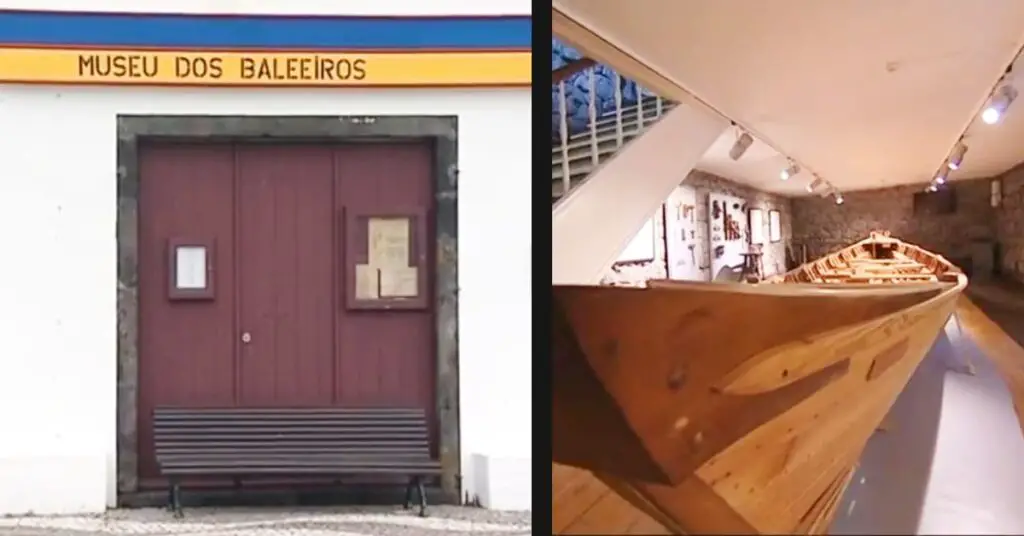
The Whaling Museum in the Azores offers a unique perspective on the region’s whaling history, focusing on human interaction with the ocean and the cultural legacy it left behind. It is perfect for history buffs, marine enthusiasts, and those fascinated by the human connection with the ocean. The three most prominent museums in the Azores are listed below.
The Museu dos Baleeiros, located on Pico Island, is a UNESCO World Heritage Site that houses a museum showcasing Azorean whalers’ lives, including exhibits, a replica whaleboat, restored iron works, and a new whaling history library.
The Whaling Industry Museum in Madalena, Pico, showcases the industrial history of whaling in the Azores, showcasing technological advancements, economic impact, and social and environmental consequences. It offers guided tours and educational programs near Praia da Ribeira.
The Museu da Fábrica da Baleia do Boqueirao, located on Flores Island, showcases the history of whaling through exhibits, tools, and everyday life. Located in a restored whale factory, it offers guided tours and educational programs.
11) Take a thermal bath in Terra Nostra Garden
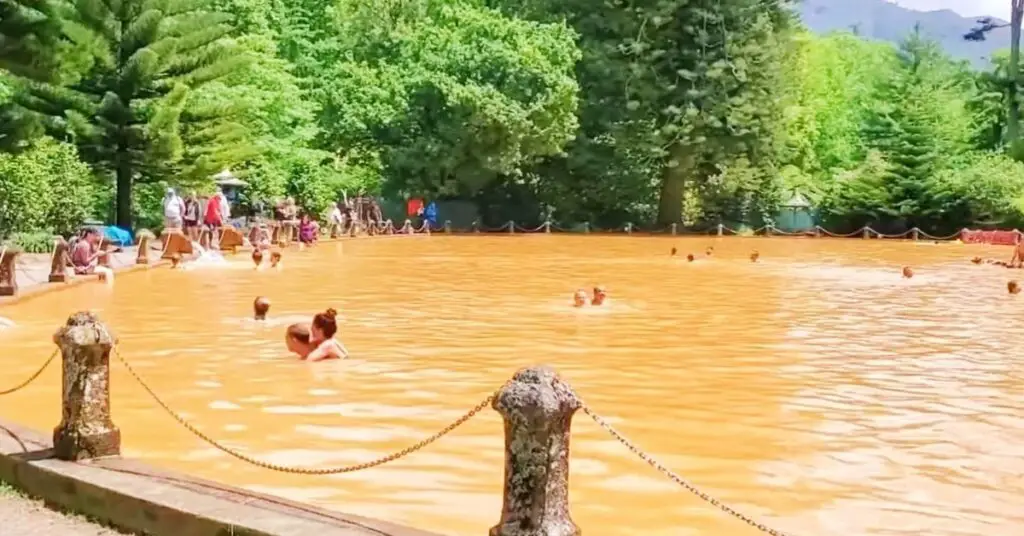
Terra Nostra Garden, located in the volcanic heart of São Miguel Island, is a botanical paradise known for its vibrant orange pool and botanical wonderland. The spa offers various thermal pools with varying temperatures and mineral compositions, catering to different needs and preferences. The main attraction is the warm, 40°C water infused with iron-rich volcanic water.
After a rejuvenating soak, guests can enjoy local delicacies like “Cozido das Furnas,” or fresh seafood and local cheeses. Terra Nostra offers a serene place for relaxation, with a peaceful atmosphere and birdsong. Beyond the spa, guests can indulge in massages or spa treatments infused with natural benefits from the thermal waters and local ingredients.
12) Sunset at Ponta do Sossego
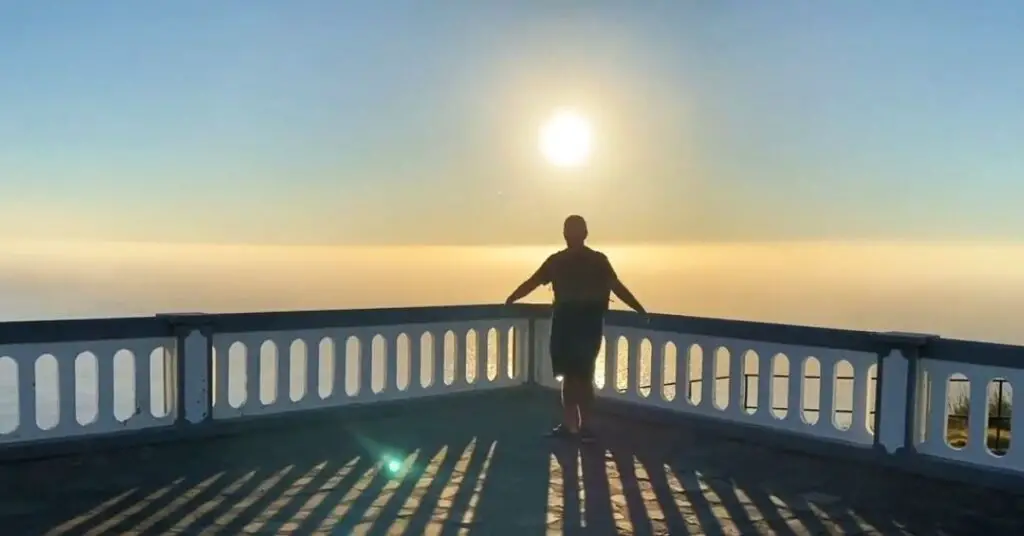
Ponta do Sossego, a small headland on the eastern coast of São Miguel Island in the Azores, offers an unforgettable sunset experience with a fiery glow from the setting sun. The sky is ablaze with pink, orange, and red hues, while the clouds are painted in gold and purple. The ocean reflects these colors, creating a breathtaking mirror-like effect.
Ponta do Sossego is known for its beautiful beaches, stunning views, and laid-back atmosphere. The sunset is a popular attraction, and visitors should arrive about an hour before sunset to enjoy the panoramic view from the lighthouse. The lighthouse offers a unique perspective of the ocean and surrounding area, making it an ideal spot to appreciate the beauty of the sunset.
13) Dive into Blue Holes
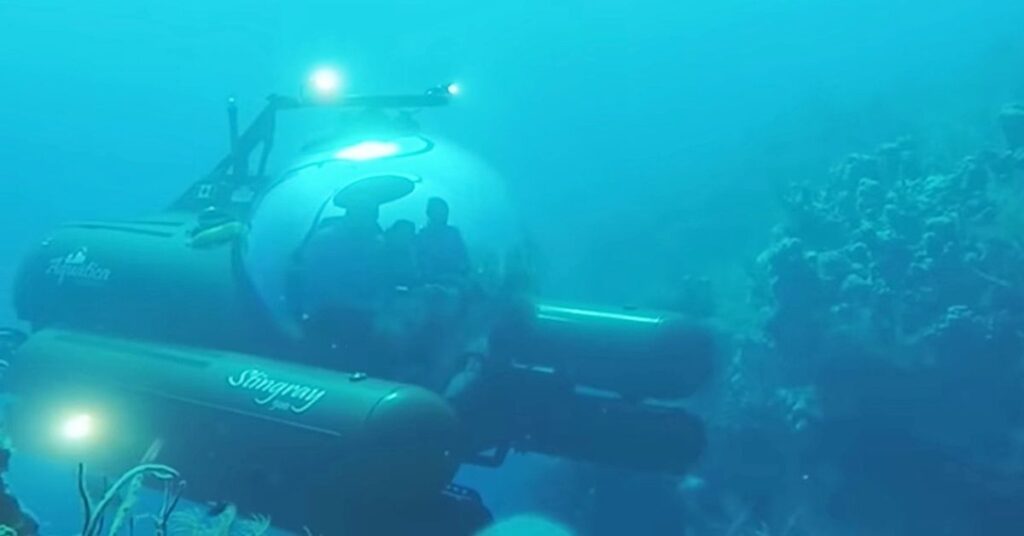
Blue holes are sinkholes with underwater caves or caverns, offering glimpses into hidden underwater worlds and unique geological formations. These deep, mysterious underwater realms come in various depths and geological formations, each posing unique challenges and rewards for divers. However, the allure lies in the adventure, sense of discovery, and beauty of exploring these mysterious underwater realms.
Blue holes offer a unique and thrilling experience for experienced divers seeking adventure and exploration. However, they also pose inherent dangers such as depth and darkness, nitrogen narcosis, entanglements due to underwater currents and cave formations, and limited visibility. To avoid these risks, divers should dive with a buddy or experienced guide, have proper training and equipment, thoroughly research the specific blue hole they wish to explore, and respect the delicate underwater ecosystem by avoiding disturbing it.
14) Climb Mount Pico do Facho
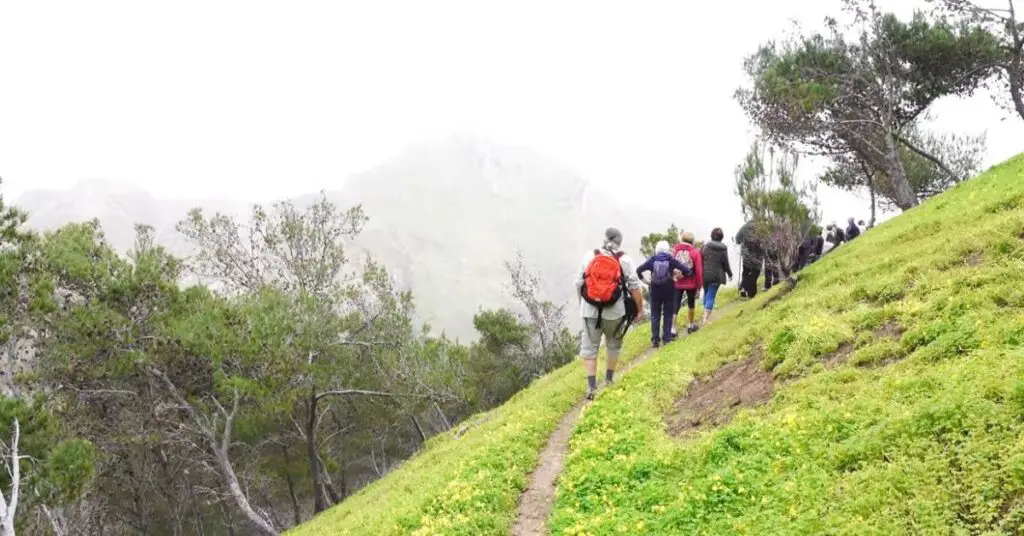
Mount Pico do Facho on Terceira Island, Azores, offers a thrilling adventure with panoramic views and historical significance. The mountain’s allure lies in its stunning vistas of Angra do Heroísmo, the capital of Terceira, the Atlantic Ocean, and other volcanic peaks. It served as a lookout point for centuries, protecting the island from pirates and enemies. The climb takes you through diverse landscapes, from lush grasslands to rugged volcanic terrain.
The challenge is moderately difficult, requiring physical fitness and stamina due to the steep and uneven trail. The trail is also subject to variable weather, so be prepared for sudden changes, especially wind and fog. Sturdy hiking boots are essential for traction and support on uneven terrain.
The starting point is Relvão Park in Angra do Heroísmo, followed by the signs for “Trilho do Facho.” The journey winds through pastures, forests, and volcanic plains, offering scenic vistas. The summit is a rewarding accomplishment, and alternative options include a shorter hike to the Pico do Facho viewpoint or a popular bike ride route.
15) Feast on fresh seafood in Ponta Delgada
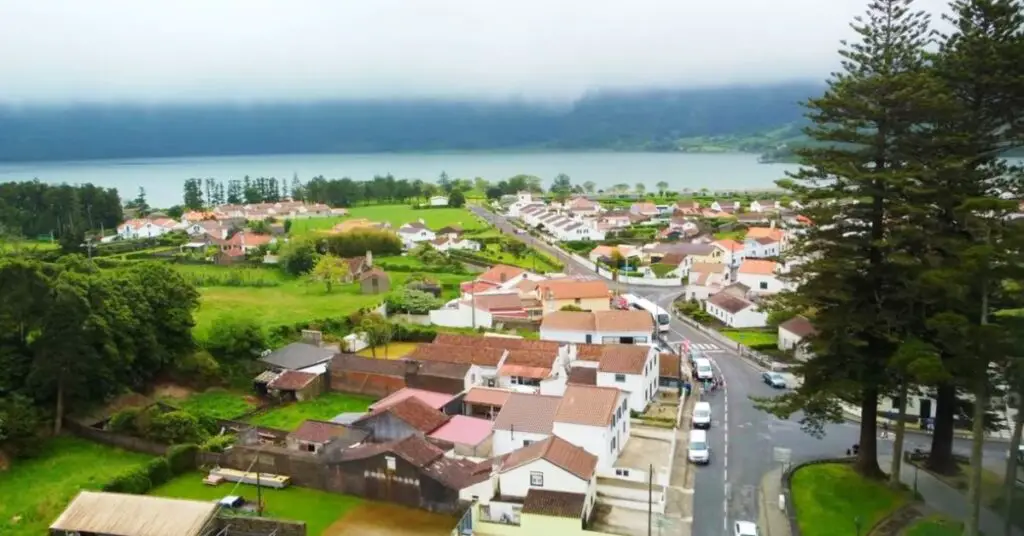
Ponta Delgada, the capital of São Miguel Island in the Azores, is a seafood paradise with a wide range of fresh, delicious options from the Azores’ pristine waters. The city’s vibrant restaurants cater to every palate and budget, offering a variety of seafood, from plump clams to succulent lobster to flavorful grilled fish.
Azorean Seafood Dishes:
- Cozido das Furnas: A stew cooked underground using volcanic heat, infused with earthy flavors.
- Lapas: a local favorite, grilled with garlic, butter, and lemon.
- Polvo à Lagareiro: Octopus cooked in a slow-simmering pot with olive oil, garlic, and herbs.
- Peixes grelhados: freshly grilled fish, with tuna, swordfish, and bream being popular.
- Caldeirada de Peixe: hearty fish stew simmered in tomato broth with potatoes and vegetables.
Best Seafood Spots:
- Mercado da Graça is a lively fish market with stalls overflowing with fresh catches.
- Restaurante Maré Viva offers stunning ocean views and a menu showcasing fresh local seafood.
- Cais da Sardinha is known for its bustling atmosphere and delicious grilled sardines.
- Peter Café Sport offers simple yet delicious seafood dishes, including tuna sandwiches and grilled fish.
FAQs
-
Where are the Azores?
Nestled around 1,400 km west of the Portuguese peninsula, the volcanic Azores archipelago is located in the midst of the North Atlantic Ocean. There are nine islands: São Miguel, Santa Maria, Terceira, Pico, Faial, Graciosa, São Jorge, Flores, and Corvo. They are an autonomous province of Portugal.
-
What is the best time to visit the Azores?
The Azores have average annual temperatures between 13°C and 24°C, having a warm subtropical climate. The best seasons to visit are spring (April–May) and fall (September–October), when it’s warmer and less crowded. Winter (November–March) can be windy and damp, but it’s also the greatest season to observe whales. Summer (June–August) can be hot and muggy.
-
How do I get to the Azores?
Arriving at Ponta Delgada Airport (PDL) on São Miguel Island is the major airport serving the Azores. Frankfurt, Boston, Toronto, Lisbon, and a number of other European and American cities are served by direct flights. By plane from Portugal’s mainland, you may reach the Azores as well.
-
How do I get around the Azores?
Renting a car is the best way to get around the Azores. You will have the most freedom to travel the islands at your own speed if you do this. Although they are occasionally sluggish, public buses and ferries are another option for getting between the islands.
-
What language is spoken in the Azores?
The official language of the Azores is Portuguese, but many people also speak English and Spanish.
-
Which things in the Azores should you not miss in 2024?
A variety of activities are available in the Azores, such as whale watching, hiking on volcanic paths, discovering hot springs, seeing historical monuments, and savoring regional cuisine.
-
Can I go whale-watching in the Azores?
Actually, the Azores are an excellent place to see whales. Numerous tour companies provide trips to see dolphins, sperm whales, blue whales, and other whale species.
-
Which hiking paths in the Azores are the most enjoyable?
The hiking routes in the Azores are breathtaking. The Sete Cidades path, the Faial Caldeira trail, and the mysterious paths surrounding Pico Mountain, which provide stunning vistas, are a few of our favorites.
-
Are there natural hot springs to visit?
Yes, the natural hot springs of the Azores are popular with tourists. Thermal baths and geothermal zones may be found in locations like Furnas on São Miguel Island, offering a unique and soothing experience.
-
Which Azores islands must I visit?
São Miguel, Pico, and Faial are frequently highly recommended due to their different landscapes, outdoor activities, and cultural attractions, while each island has its own distinct appeal.
-
Can I explore volcanic craters in the Azores?
Of course! Volcanic activity formed the Azores, and you may visit volcanic craters like São Miguel Island’s Caldeira do Faial and Sete Cidades Crater.
-
Are scuba diving opportunities available in the Azores?
Indeed, there are great scuba diving chances in the Azores. The marine life in the underwater environment around the islands is abundant, and divers of all skill levels may be accommodated by a number of diving centers.
-
Are there any water activities available in the Azores?
Yes, there are options for a variety of water sports in the Azores, such as sailing, snorkeling, and kayaking. It’s the ideal location for water enthusiasts because of the crystal-clear turquoise seas and abundant marine life.
